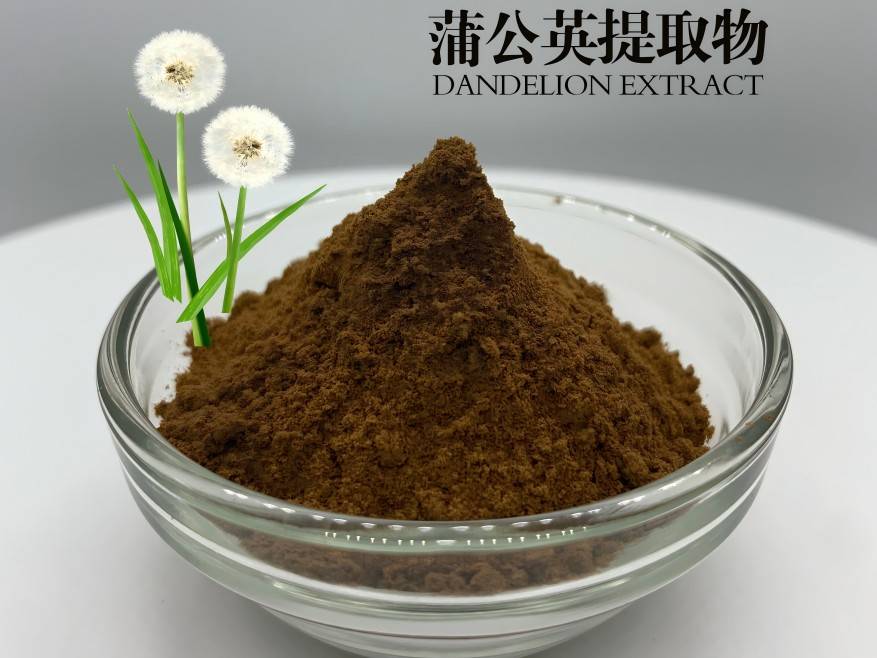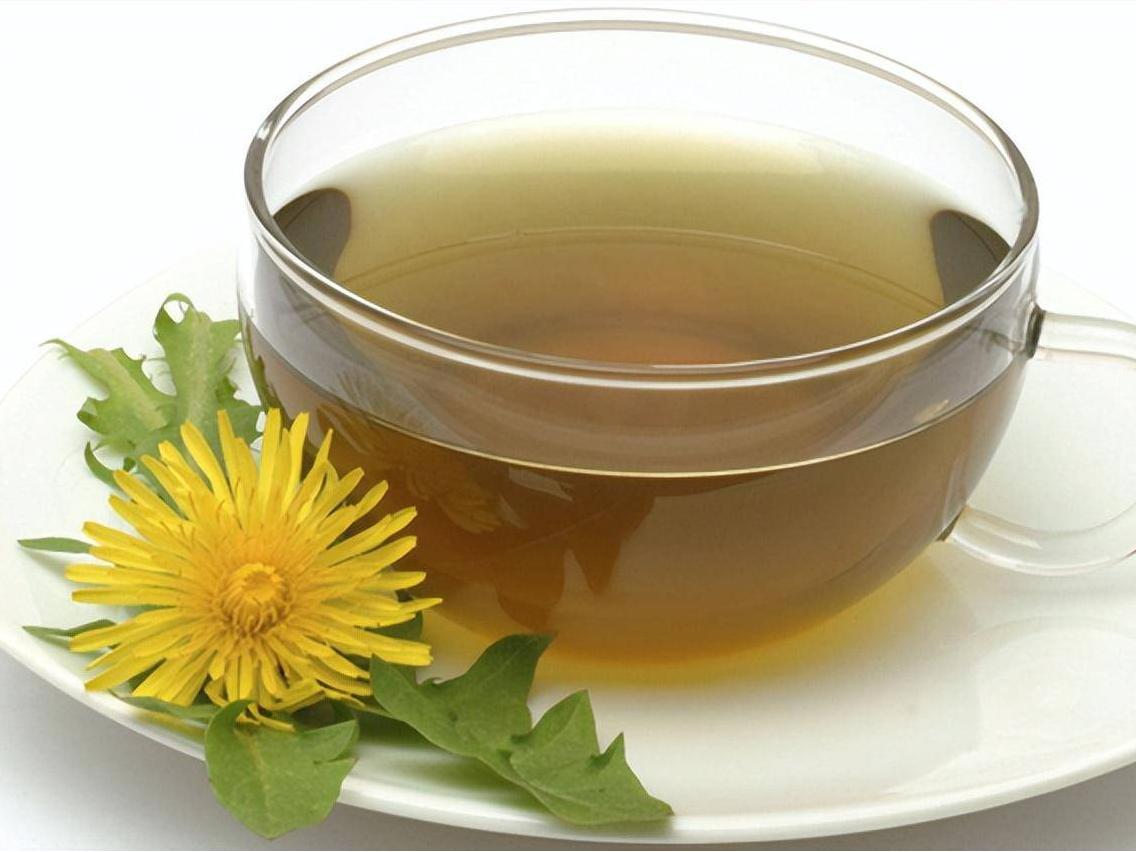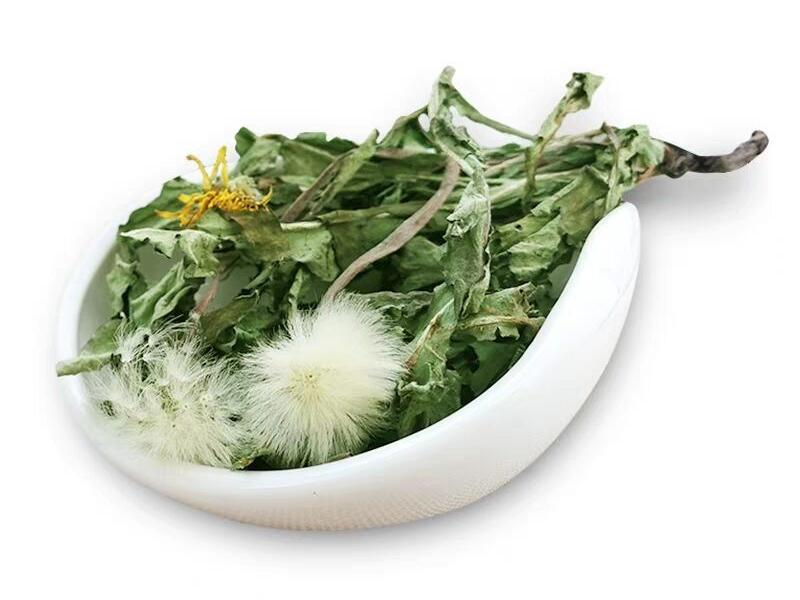Study on Dandelion and Cancer
In recent years, the incidence of cancer has gradually increased [1]. In 2020, there were more than 19.29 million new cases of cancer worldwide, of which more than 4.56 million were new cases of cancer in China, accounting for 23.7%, making China the country with the largest number of new cancer cases in the world [2]. Traditional Chinese medicine believes that heat toxin is one of the main causes of malignant tumors, and drugs that clear away heat and detoxify are often used to treat malignant tumors caused by heat toxin. Dandelion, as a traditional heat-clearing and toxin-removing medicine, has received widespread attention from medical practitioners of all ages.
Dandelion (Taraxacum mongolicum Hand.-Mazz., Taraxacum sinicum Kitag. or other species in the same genus) is the dried whole herb of the dandelion plant (Taraxacum mongolicum Hand.-Mazz., Taraxacum sinicum Kitag. or other species in the same genus). Yilin Zanyou records that dandelion has a wide range of uses and is used to treat many conditions such as swelling, carbuncle, and boils. Modern phytochemical research[3] has found that dandelion is not only rich in protein, fatty acids, amino acids, vitamins and trace elements, but also contains various functional ingredients such as triterpenoids, flavonoids, polysaccharides, sterols, and organic phenols.

1 The relationship between heat syndrome and tumors in traditional Chinese medicine
Traditional Chinese medicine believes that malignant tumors are a systemic disease with local reactions, and has found that cancer patients often have local pain, fever, constipation, thirst and red urine, yellow greasy fur, rapid and slippery pulse and other heat syndrome manifestations [4]. Wu Qian of the Qing Dynasty believed that the toxic fire of the heart and spleen is one of the main causes of glossitis. Both internal injury and external infection cause fever, and heat toxins easily deplete the body of energy and fluids, often resulting in patients suffering from Qi deficiency and fluid deficiency, phlegm coagulation and blood stasis, and eventually developing symptoms such as accumulation and goiter [5].
Based on the therapeutic principle of “cold treating heat” proposed in Suwen, clinically, Chinese medicines that clear heat and detoxify are often used to clear the internal toxins. Modern pharmacological studies [6] have found that some heat-clearing and detoxifying drugs have anticancer effects, can regulate the body's immune function [7], and exhibit significant anti-inflammatory and detoxification effects [8]. For example, Huang Qiwai et al. [9] found that monkflower glycoside (an extract of wild chrysanthemum) can inhibit the migration and invasion of human breast cancer cells in vitro. Dandelion is a traditional Chinese medicine used to clear away heat and detoxify the body, and it is widely used by doctors of all ages for its remarkable effects in clearing away heat and detoxifying the body, reducing swelling and dispersing lumps. Modern research[10] has found that dandelion contains a variety of effective ingredients that have obvious anti-inflammatory, anti-oxidative stress, and anti-tumor effects.
2 Main active ingredients of dandelion
2.1 Triterpenes
Modern research has found that triterpenoids can exhibit significant anti-tumor effects by blocking the cell cycle, promoting apoptosis, regulating immune function, and exerting cytotoxic effects. Xu L et al. [11] found in experiments that taraxerol can exert antioxidant stress and anti-inflammatory effects on ethanol-induced liver damage in mice by influencing the CYP2E1/Nrf2/HO-1 and NF-κB signal pathways produce an antioxidant stress and anti-inflammatory response to ethanol-induced liver damage in mice. Research [12] found that Bauerane (a triterpenoid compound extracted from dandelion root) can activate the STAT3 signaling pathway through the PI3K/AKT transcription, thereby causing A549 human lung cancer cells to stagnate in the S phase, thereby inducing apoptosis in cancer cells. Yang F et al. [13] found that dandelion sterols (TAS) can inhibit the activation of NLRP3 inflammasomes, and speculated that this may be due to the anti-inflammatory effect of regulating the macrophage mTOR signaling pathway.
2.2 Polysaccharides
Dandelion polysaccharides inhibit the proliferation of liver cancer cells in vitro and in vivo. Research [14] found that dandelion polysaccharides have significant anti-angiogenic effects both in vivo and in vitro. The mechanism may be related to the targeted influence on the PI3K/AKT signaling pathway, thereby inhibiting the expression of vascular endothelial growth factor (VEGF) and hypoxia-inducible factor-1α (HIF-1α).
Using dandelion as the raw material, two water-soluble polysaccharide components, DRP1 and DRP2, were produced by chromatographic separation and purification using DEAE-52 and SephacrylTMS-200. Their hepatoprotective effects were evaluated and compared, and it was found that DRP1 and DRP2 can reduce acetaminophen (APAP)-induced oxidative liver damage by inhibiting the production of malondialdehyde (MDA) and reactive oxygen species (ROS) and increasing the levels of liver glutathione (GSH), glutathione peroxidase (GPx), total superoxide dismutase (T-SOD), and catalase (CAT) levels to reduce acetaminophen (APAP)-induced liver oxidative damage [15]. In addition, the molecular mechanism of the antioxidant activity of DRP1 and DRP2 indicates that DRP1 and DRP2 induce Nrf2 activation by reducing the expression of its repressor protein Keap1, resulting in enhanced expression of the downstream antioxidant proteins NQO1 and HO-1, and ultimately preventing APAP-induced liver oxidative damage [15].
2.3 Flavonoids
Previous studies [16] have shown that flavonoids can dilate blood vessels, improve vascular endothelial function, regulate proliferation, and inhibit neuroinflammation by reducing the release of cytokines and inhibiting the expression of pro-inflammatory mediators (NF-κB cascade). Sang Lisheng et al. [17] used dandelion flavonol glycoside extract to intervene in esophageal squamous cell carcinoma cells and found that it could significantly inhibit the growth, migration, and invasion of cancer cells. They also found that the extract could effectively inhibit epithelial-mesenchymal transition (EMT) and metastasis of tumor cells, and speculated that the mechanism of intervention in EMT may be related to the extracellular signal-regulated kinase (ERK) signaling pathway.
2.4 Sterols
Plant sterols are similar in structure to animal sterols. Modern pharmacological research [18] has found that sterols can lower blood cholesterol levels, and have anti-inflammatory, regulate growth, regulate immunity and inhibit cancer. Couder-García B D C et al. [19] found that Plant sterol (30 mg/kg or 15 mg/kg) had a significant inhibitory effect on tumor growth in xenograft mice and could induce apoptosis of tumor cells. Moreover, the results of blood biochemical analysis of healthy mice using this sterol confirmed that the sterol was not toxic.
Chen Xiang et al. [20] found that dandelion sterols can inhibit the secretion of matrix metalloproteinase 2 (MMP-2) and matrix metalloproteinase 9 (MMP-9) by inhibiting the SDF-1/CXCR4 signaling pathway, ultimately inhibiting the migration and invasion of T24 cells. Chu Aijing et al. [21] established a rat mammary gland inflammation model and found that after administering low and high doses of dandelion sterols, the expression levels of tumor necrosis factor-alpha (TNF-α), interleukin-1β (IL-1β), interleukin-6 (IL-6), COX-2 mRNA, phosphorylated stress-activated protein kinase (JNK), ERK, and p38, etc., were significantly lower than those in the model group, indicating that dandelion sterols can exert an anti-inflammatory effect by reducing the level of inflammatory factors in the process of mastitis.
2.5 Organic acids
Traditional Chinese medicine organic acid compounds have a wide range of effects, such as anti-inflammatory, antithrombotic, antioxidant, and anticancer effects [22]. Yang N et al. [23] showed that TMHM-OAC (mainly composed of caffeic acid, chicoric acid, and chlorogenic acid), one of the main components of dandelion, significantly improved inflammation in a lipopolysaccharide-induced tracheal lesion ICR mouse model. It can reduce the number of inflammatory cells in tracheal tissue and significantly improve the irregular nuclear characteristics of tracheal epithelial cells, and researchers speculate that its significant regulatory effect may be related to the TLR4/NF-κB signaling pathway.
3 Dandelion's anti-cancer effects
3.1 Inhibits tumor cell proliferation
Cell proliferation and differentiation disorders are often the main causes of tumorigenesis. ERK is the main determinant of the mitogen-activated protein kinase (MAPK) pathway involved in cell survival, differentiation and growth; in mammals, ERK1/2 kinase is highly specialized in regulating cell proliferation. Sigstedt S C et al. [24] found that a DLE (dandelion leaf extract) aqueous solution significantly reduced the growth of MCF-7/AZ breast cancer cells in a dose-dependent manner. The researchers speculated that the effect of DLE on cell proliferation may be attributed to its inhibition of ERK expression.
3.2 Inducing apoptosis in tumor cells
The activation of the PI3K/Akt signaling pathway is closely related to tumors [25], and abnormal activation of the ERBB2 (one of the tyrosine kinases of the HER family of receptors) and PI3K/AKT cascade pathways is often associated with tumorigenesis, drug resistance, and tumor progression [26]. Apoptosis is programmed cell death that is activated and/or inhibited by different proteins, such as the caspase cascade pathway. The caspase pathway can be regulated by stimulating or inhibiting different apoptosis genes, such as Bcl2, P53, AKT1 or BID. Research[27] has found that dandelion extract can effectively reduce the expression levels of ERBB2, PIK3CA, Bcl2, Pdk1 and Akt1 mRNA, thereby inducing apoptosis of tumor cells.
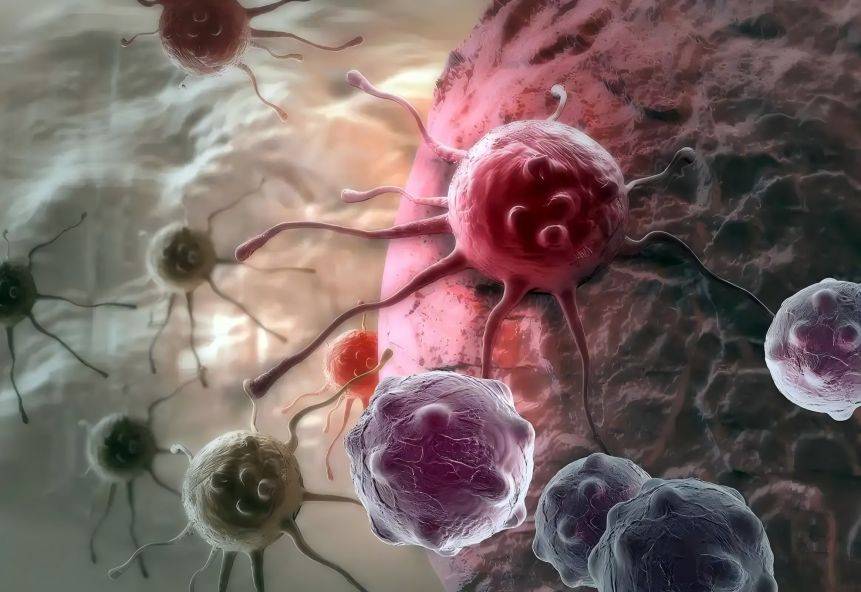
3.3 Inhibit cell invasion and metastasis
EMT plays a very important role in the development of tumors, so inhibiting EMT-mediated tumor invasion is the key to inhibiting tumors. A decrease in the expression level of E-cadherin is considered to be a key step in EMT during tumorigenesis. Sang Lisheng et al. [17] found that dandelion flavonoid extracts can inhibit EMT by increasing E-cadherin protein expression and reducing N-cadherin. Matrix metalloproteinases (MMPs) degrade the extracellular matrix and destroy the basement membrane, leading to cell migration. Guo Qinyu[28] found that dandelion at different concentrations can inhibit the proliferation of tumor tissue in H22 tumor-bearing mice, and can significantly down-regulate the expression of MMP-2, MMP-9, transforming growth factor-β1 (TGF-β1) and mammalian target of rapamycin (mTOR) in tumor cell tissue.
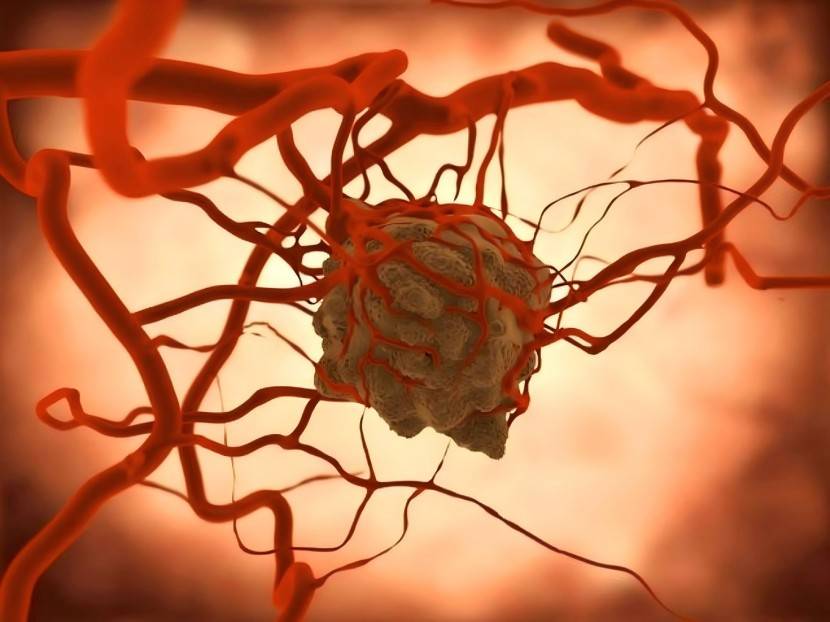
3.4 Improving immune function
Immune function is closely related to tumorigenesis [29]. Wu Xiaoli et al. [30] found that ETM (dandelion extract) can enhance the proliferation ability of mouse splenic lymphocytes, natural killer cell activity and macrophage phagocytosis index level, thereby significantly improving mouse immune function.
4 Summary
As people's lifestyles continue to change, the incidence of cancer is also increasing, seriously threatening human life and health. Traditional Chinese medicine has been widely used in the treatment of various types of tumors. Dandelion, as a representative of heat-clearing and detoxifying medicines with significant anti-cancer effects, has received widespread attention in recent years. However, the main active ingredients and their anti-tumor mechanisms of action are not yet clear and require further exploration.
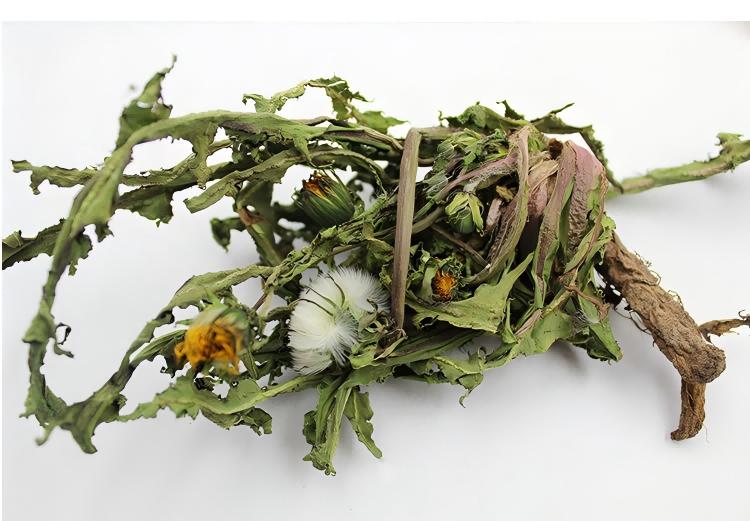
Reference
[1]XIANG Y N,GUO Z M,ZHU P F,et al. Traditional Chinese medicine as a cancer treatment:modern perspectives of ancient but advanced science[J]. Cancer Med,2019,8(5): 1958-1975.
[2]SUNG H,FERLAY J,SIEGEL R L,et al.Global cancer statis - tics 2020:GLOBOCAN estimates of incidence and mortality worldwide for 36 cancers in 185 countries[J].CA Cancer J Clin,2021,71(3):209-249.
[3] Xu Xianmeng, Dong Wenbin, Lu Jun, et al. Research progress on the chemical composition and functional properties of dandelion [J]. Journal of Food Safety and Quality Testing, 2018, 9(7): 1623-1627.
[4] Meng Dan, Zhu Yingjie. Research progress on “heat-poisoning” and digestive tract tumors [J]. Global Traditional Chinese Medicine, 2017, 10(6): 768-772.
[5] Wang Xueyan, Yang Zhu, Long Fengxi, et al. A brief discussion on the application of the therapeutic principles and methods of clearing away heat and detoxifying in tumor diseases [J]. Journal of Traditional Chinese Medicine in Clinical Practice, 2018, 30(8): 1409-1412.
[6] Gu JZ, Xu BY, Zhan Y, et al. Guo Yong's experience in treating malignant tumors with Zhuye Gushao Tang [J]. Zhejiang Journal of Traditional Chinese Medicine, 2020, 55(12): 902-904.
[7] Ouyang Xiong. Pharmacological effects and application of heat-clearing and detoxifying drugs in the treatment of tumors [J]. Research on Chinese Patent Medicine, 1987, 9 (12): 36-37.
[8] Liu Guo. Research progress of heat-clearing and detoxifying method in the treatment of tumors [C]//Proceedings of the 2005 National Symposium on Traditional Chinese Medicine Research and Chinese Medicine Pharmacy Management. Chongqing, 2005: 95-97.
[9] Huang QW, Huang T, Niu ML, et al. Mongolian honeysuckle glycoside inhibits the migration and invasion of human breast cancer MDA-MB-231 cells by regulating the IKK/NF-κB signaling pathway [J]. Chinese Journal of Pathological Physiology, 2019, 35(12): 2194-2200.
[10] Cui Najuan, Wang Hongqi. Research on the mechanism and application of Chinese medicine for clearing away heat and detoxifying in the prevention and treatment of malignant tumors [J]. Gansu Traditional Chinese Medicine, 2005, 18(3): 43-44.
[11]XU L,YU Y F,SANG R,et al.Protective effects of taraxas - terol against ethanol-induced liver injury by regulat - ing CYP2E1/Nrf2/HO-1 and NF- κ B signaling pathways in mice[J].Oxid Med Cell Longev,2018,2018:8284107.
[12]CHEN Q,WANG M,SHEN C J. Bauerane induces S-phase cell cycle arrest,apoptosis,and inhibition of proliferation of A549 human lung cancer cells through the phosphoinositide 3-kinase(PI3K)/AKT and signal transducer and activator of transcription 3(STAT3)signaling pathway[J].Med Sci Monit, 2020,26:e919558.
[13]YANG F,YE X J,CHEN M Y,et al.Inhibition of NLRP3 inflam - masome activation and pyroptosis in macrophages by ta - raxasterol is associated with its regulation on mTOR signaling[J].Front Immunol,2021,12:632606.
[14]REN F,WU K X,YANG Y,et al.Dandelion polysaccharide ex - erts anti-angiogenesis effect on hepatocellular carci - noma by regulating VEGF/HIF-1 αexpression[J].Front Phar - macol,2020,11:460.
[15]CAI L L,WAN D W,YI F L,et al. Purification,preliminary characterization and hepatoprotective effects of poly - saccharides from dandelion root[J].Molecules,2017,22(9): 1409.
[16]LI G X,DING K Y,QIAO Y L,et al.Flavonoids Regulate In - flammation and Oxidative Stress in Cancer[J]. Molecules, 2020,25(23):5628.
[17] Sang Lisheng, Wu Jie, Cao Yajie, et al. Effects of dandelion flavonol extract on the proliferation and invasion of esophageal squamous cell carcinoma cells [J]. Food Industry Science and Technology, 2020, 41(12): 291-295, 301.
[18] Han Junhua. Properties, functions and applications of phytosterols [J]. Foreign Medicine (Health Series), 2001(5): 285-291.
[19]COUDER-GARCÍA B D C,JACOBO-HERRERA N J,ZENTELLA-DEHESA A, et al. The phytosterol peniocerol inhibits cell prolif - eration and tumor growth in a colon cancer xenograft model[J].Front Oncol,2019,9:1341.
[20] Chen X, Zheng L, Chen D, et al. Research on the effect and mechanism of dandelion sterols in regulating the migration and invasion of bladder cancer T24 cells [J]. Chinese Journal of Integrated Traditional and Western Surgery, 2020, 26 (2): 217-221.
[21] Chu Aijing, Cheng Xufeng, Zhao Huiduo, et al. Anti-inflammatory effect and mechanism of dandelion sterols on lipopolysaccharide-induced mastitis in rats [J]. Journal of Southeast University (Medical Sciences), 2019, 38(2): 303-308.
[22] Tang Xilan, Liu Jianxun, Li Lei. Pharmacological effects of organic acids in traditional Chinese medicine and their application in cardiovascular diseases [J]. Chinese Journal of Experimental Traditional Medicine, 2012, 18(5): 243-246.
[23]YANG N,LI C,TIAN G,et al. Organic acid component from Taraxacum mongolicum Hand. -Mazz alleviates inflammatory injury in lipopolysaccharide-induced acute tracheobron - chitis of ICR mice through TLR4/NF- κ B signaling path - way[J].Int Immunopharmacol,2016,34:92-100.
[24]SIGSTEDT S C,HOOTEN C J,CALLEWAERT M C,et al.Evaluation of aqueous extracts of Taraxacum officinale on growth and invasion of breast and prostate cancer cells[J]. Int J Oncol,2008,32(5):1085-1090.
[25] Hong Zide, Mo Zhixian. 11 signal pathways in the anti-tumor mechanism of traditional Chinese medicine [J]. Chinese Journal of Experimental Pharmacology, 2018, 24 (21): 205-218.[26]SU Y H,JIANG Y D,SUN S S,et al.Effects of HER2 ge - netic polymorphisms on its protein expression in breast cancer[J].Cancer Epidemiol,2015,39(6):1123-1127.
[27]NASSAN M A,SOLIMAN M M,ISMAIL S A,et al.Effect of Ta - raxacum officinale extract on PI3K/Akt pathway in DMBA- induced breast cancer in albino rats[J].Biosci Rep,2018, 38(6):BSR20180334.
[28] Guo Qinyu. The effect of dandelion on human gastric cancer BGC823 cells and mouse liver cancer H22 cells [D]. Lanzhou: Lanzhou University, 2015.
[29] Gao Lisheng, Liu Ningning, Shao Xuezhai. Research progress on the effect of tumors on immune function of the body [J]. Hebei Medical Journal, 2008, 14 (9): 1101-1104.
[30] Wu Xiaoli, Cai Yunqing, Zhao Yan, et al. The regulatory effect of dandelion extract on mouse immune function [J]. Journal of Nanjing Medical University (Natural Science Edition), 2005, 25 (3): 163-165.


 English
English French
French Spanish
Spanish Russian
Russian Korean
Korean Japanese
Japanese